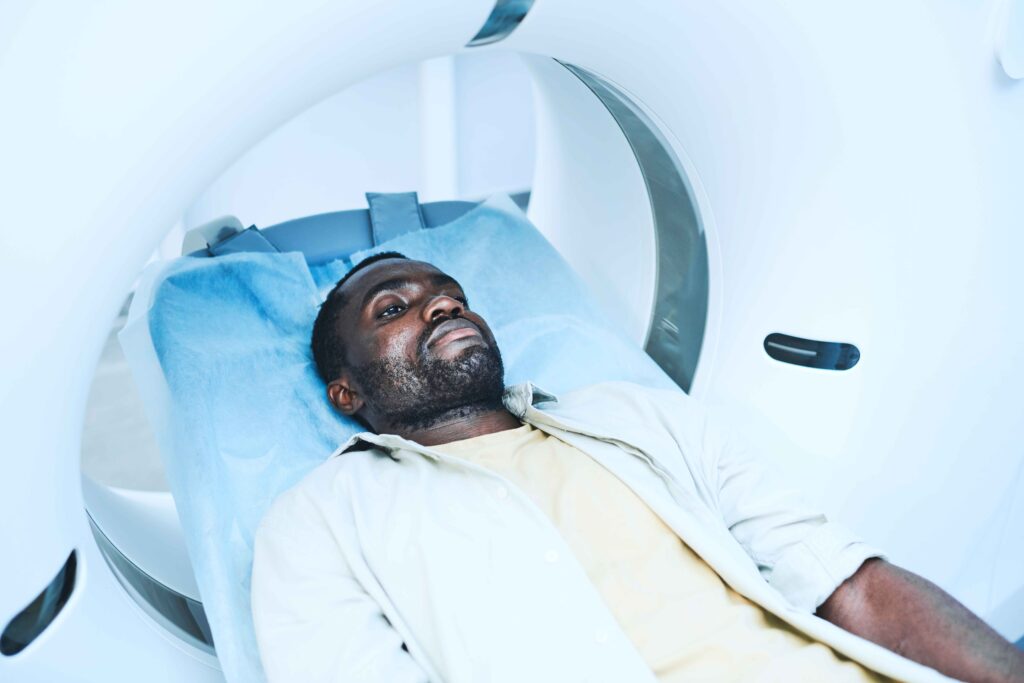Introduction
Brain Worms: A Hidden Threat to Adults Over 50
As we age, our bodies face many health challenges, some of which are less understood and rarely discussed. Among these, infections caused by parasitic “brain worms” present a significant, albeit less common, health concern. Although “brain worms” might sound like something from a sci-fi film, it refers to a severe condition that predominantly involves a parasitic infection of the brain, such as neurocysticercosis. The larvae of the pork tapeworm, Taenia solium, primarily cause this condition.
The risk of contracting these parasites typically increases with age, particularly as the immune system may not be as robust as it once was. Understanding brain worms is particularly relevant for adults over 50, a demographic often overlooked when discussing such infections.
The Objective of This Blog
The purpose of this blog is twofold. First, we aim to shed light on the symptoms associated with brain worm infections, helping our readers identify potential warning signs. Understanding these symptoms is crucial, as they often mimic those of more common age-related diseases, potentially leading to misdiagnosis or delayed treatment.
Second, we will explore the causes behind these infections. Knowing how brain worms are contracted can help avoid them, which is particularly pertinent for those in their golden years who might be planning travels to regions where such parasites are more prevalent.
Lastly, we will provide actionable prevention strategies. Our focus is empowering you, particularly those over 50, with the knowledge and tools to protect yourself from this hidden threat. Educating ourselves and taking preventive measures can significantly reduce the risk of such a severe health condition.
Stay with us as we delve deeper into the world of brain worms, examining symptoms, exploring causes, and discussing essential prevention tips to help keep you safe and informed.
I will not use graphic images in the blog, as I’m sure none of us wish to see pictures of worms in a human brain!

What Are Brain Worms?
Demystifying Brain Worms: More Than Just a Misnomer
The term “brain worms” often conjures images of science fiction scenarios. However, it is a colloquial expression used to describe a genuine and severe medical condition involving parasitic infections of the brain, primarily neurocysticercosis.
This condition is caused by the larval stage of the pork tapeworm, Taenia solium, which can develop into cysts within the brain. These cysts can cause a range of neurological symptoms, making this condition a critical health issue to understand, especially for those over the age of 50.
Lifecycle of the Pork Tapeworm
The lifecycle of the pork tapeworm is complex and begins when humans ingest undercooked or raw pork containing larval cysts. Once inside the human digestive tract, these cysts release tapeworms that attach to the intestinal walls. Adult tapeworms then produce eggs passed out of the body through faeces.
If these faeces, contaminated with tapeworm eggs, come into contact with food or water sources and are ingested by another person, the lifecycle continues. Inside the new host, the eggs hatch into larvae, which can then migrate to different body parts, including the brain, forming cysts and leading to neurocysticercosis.
Why It’s a Concern Even in Developed Countries
Although infections from Taenia solium are more common in regions with poor sanitation and free-ranging livestock, such as parts of Latin America, Africa, and Asia, they are not confined to these areas. Global travel and immigration can lead to exposure even in developed countries, where such infections were previously rare.
People travelling to endemic regions might unknowingly consume contaminated food or water, returning the parasite to their home country. Additionally, immigrants from regions where the parasite is common may inadvertently introduce the tapeworm into new areas.
This global dynamic makes understanding brain worms essential to travel safety and public health protocols, particularly for older adults who may be more susceptible to severe infections due to weakened immune systems. As mobility and global connectivity increase, so does the potential for health issues like brain worms to cross borders, making knowledge of this condition more crucial than ever.

Signs and Symptoms
Recognising the Signs: When Brain Worms Mimic Ageing
Neurocysticercosis, or the infection commonly referred to as “brain worms,” can manifest through a range of neurological symptoms that are not only distressing but also potentially dangerous. For adults over 50, recognising these signs is particularly challenging as they can easily be mistaken for more benign age-related conditions. Here’s what to watch for:
Common Symptoms of Brain Worm Infection
- Headaches: Persistent or severe headaches that don’t seem typical of tension headaches or migraines.
- Seizures: A new onset of seizures in an adult who has no history of seizure disorders can be a significant indicator of a parasitic brain infection.
- Confusion: Sudden or gradual onset of confusion, difficulty concentrating, or memory problems.
- Balance Issues: Problems with balance or coordination, which seem like typical age-related issues, can also be a symptom of brain cysts.
These symptoms arise because the cysts formed by the parasites in the brain can cause inflammation or disrupt normal brain function in various ways. Since these signs are expected in multiple neurological conditions, their presence, especially in combination, should be taken seriously.
The Challenge of Diagnosis in Older Adults
For those over 50, these symptoms may mistakenly be attributed to stroke, Alzheimer’s disease, or just the general effects of ageing. This confusion in diagnosis underscores the importance of detailed medical evaluations when such symptoms arise. Awareness is vital for those potentially affected, their families, and healthcare providers who might first dismiss these signs as typical ageing processes.
Seeking Medical Advice
Suppose you or someone you know is experiencing any combination of these symptoms, especially after travelling to areas known for parasitic infections. In that case, it is crucial to seek medical advice. A healthcare provider can perform various diagnostic tests, from imaging studies like MRI or CT scans to blood tests identifying antibodies against the parasite. Early medical intervention can significantly improve outcomes, reducing the risk of complications associated with brain worm infections.

Risk Factors and Causes
Understanding How Brain Worms Spread: Key Risk Factors
The parasitic infection known as neurocysticercosis, which leads to what is colloquially known as brain worms, has specific and well-documented causes and risk factors. Knowing these can help individuals, especially those over 50, better protect themselves from this dangerous condition.
Primary Causes of Brain Worm Infection
- Ingestion of Undercooked Pork: Consuming pork that is not thoroughly cooked and contains larval cysts of Taenia solium is one of the most direct ways of contracting this parasite. These infectious cysts can develop into adult worms within the human gastrointestinal tract.
- Consuming Contaminated Food and Water: The eggs of the pork tapeworm are often spread through food, water, or surfaces contaminated with faeces from an infected person. If these microscopic eggs are ingested, they can hatch into larvae and migrate to the brain, forming cysts that lead to infection.
Geographic and Behavioral Risk Factors
- Travelling or Living in Endemic Regions: Regions where sanitation is poor and free-ranging livestock are common, such as parts of Latin America, Africa, and Asia, are hotspots for neurocysticercosis. Travelers to and residents of these areas are at higher risk of exposure to the parasite.
- Lack of Proper Sanitary Practices: In areas where hygiene practices are inadequate, the risk of Taenia solium transmission increases. This includes places where human waste is improperly disposed of, which can contaminate soil and water used to grow food.
Age-Related Considerations
Our immune system naturally weakens as we age, making older adults more susceptible to infections, including those caused by parasites. This is particularly true for those over 50, who may also have other underlying health conditions that can exacerbate the effects of and vulnerability to such infections.
Mitigating Risks
Understanding these risk factors is crucial for managing and reducing the likelihood of brain worm infections:
- Educate Yourself and Others: Awareness of how these infections spread is the first step in prevention.
- Follow Food Safety Practices: Ensure that pork and other meats are cooked to safe temperatures and that all fruits and vegetables are washed thoroughly.
- Practice Good Hygiene. Especially when travelling, wash your hands regularly and consume food and water from safe sources.

Diagnosis and Treatment
Identifying and Addressing Brain Worm Infections
Correctly diagnosing and treating brain worm infections is crucial for effective management, particularly in adults over 50, where prompt action can prevent serious complications. Here’s how healthcare professionals typically diagnose and treat conditions like neurocysticercosis:
Diagnostic Process
- Imaging Techniques: Magnetic Resonance Imaging (MRI) and Computed Tomography (CT) scans are critical tools for diagnosing brain worm infections. These imaging modalities can visualise cysts caused by the larvae in the brain, providing clear evidence of the disease.
- Blood Serology Tests: Blood tests that detect antibodies against Taenia solium can support the diagnosis, especially in ambiguous cases. These tests help confirm the presence of the parasite, even if imaging is inconclusive.
- Additional Diagnostic Methods: Sometimes, a lumbar puncture may be performed to analyse cerebrospinal fluid for signs of inflammation or infection indicative of neurocysticercosis.
Standard Treatments
- Antiparasitic Drugs: Medications such as albendazole or praziquantel kill parasites. The choice of drug and the duration of treatment depend on the stage and location of the cysts and the patient’s overall health.
- Anti-inflammatory Drugs: Corticosteroids like dexamethasone or prednisone are often prescribed to reduce the inflammation caused by dying cysts in the brain.
- Antiepileptic Drugs: For patients experiencing seizures, antiepileptic medications are crucial for managing this symptom, which is a common complication of neurocysticercosis.
The Importance of Early Diagnosis
Early detection of brain worm infections can significantly influence the outcome. When diagnosed early, treatments can be more effective, potentially preventing the progression of symptoms and avoiding long-term neurological damage. This underscores the importance of seeking medical consultation at the first sign of unusual neurological symptoms, especially in individuals who have travelled to or live in areas where the parasite is endemic.
Management of Chronic Conditions
In cases where brain worm infections have led to chronic neurological conditions, ongoing management may be necessary. This can include continued use of antiepileptic drugs, regular medical monitoring, and supportive therapies tailored to the individual’s needs.
Prevention Tips
Proactive Steps to Prevent Brain Worm Infections
- Preventing brain worm infections, particularly in adults over 50, involves a series of practical and straightforward steps that can significantly reduce the risk of exposure to Taenia solium, the parasite responsible for most cases. Here’s how you can protect yourself and your loved ones:
Ensuring Food Safety
- Cook Pork Properly: Pork should be cooked to an internal temperature of at least 145°F (63°C), followed by a three-minute rest before carving or consuming. This temperature is sufficient to kill parasite larvae present in the meat.
- Handle food Hygienically: Cross-contamination can occur in the kitchen, so always wash your hands, utensils, and surfaces after they come in contact with raw meat.
Safe Eating and Drinking Habits While Traveling
- Avoid Contaminated Food and Water: In areas where Taenia solium is common, avoid eating raw or undercooked meats and other foods that may not be prepared hygienically. Stick to bottled or boiled water and avoid ice in drinks.
- Eat at Reputable Places: When travelling, eat at well-established restaurants likely to follow proper food safety regulations.
Regular Health Check-Ups
- Consult Healthcare Providers: Before travelling to areas known for parasitic infections, talk to a healthcare provider about preventive measures. This may include advice on vaccinations or preventative treatments available.
- Post-Travel Check-Ups: If you have travelled to a high-risk area and experience symptoms suggestive of a parasitic infection, consult a healthcare provider promptly for evaluation.
Community Awareness and Education
- Inform and Educate: Share knowledge about the risks and prevention of brain worms with your community, especially if you or someone you know is planning to travel to an endemic area. Awareness can drastically reduce the risk of infection.
- Promote Good Hygiene Practices: Advocate for and practice good hygiene at home and in your community to help prevent the spread of parasites.

Conclusion
Prioritising Health and Awareness Against Brain Worms
Throughout this blog, we’ve explored the critical aspects of brain worms—what they are, how they manifest, and their associated risk factors. Understanding these elements is essential, particularly for adults over 50. Recognising the signs and symptoms of brain worm infections is the first step towards safeguarding your health. These symptoms, often easily mistaken for common age-related issues, can indicate a severe underlying condition that requires immediate attention.
The Seriousness of Brain Worm Infections
The potential seriousness of a brain worm infection cannot be overstated. If not treated promptly and effectively, it can lead to severe neurological complications. However, the good news is that early diagnosis and treatment can drastically improve outcomes. Access to medical care at the first sign of trouble and knowing what symptoms to look out for can make a significant difference in recovery and quality of life.
Effective Strategies for Prevention
Moreover, prevention remains the most effective strategy against brain worms. Simple measures like ensuring food safety, maintaining good hygiene, and being cautious while travelling can prevent most infections. Regular consultations with healthcare providers, especially before and after travelling to endemic regions, are crucial to staying protected.
Maintaining Health as We Age
As we age, the stakes for maintaining our health become even higher. By staying informed and proactive, we can avoid the pitfalls of such infections and continue to enjoy a healthy, active lifestyle well into our later years.
We encourage you to share this information with friends and family, discuss it with your healthcare providers, and remember it during your travels or daily routines. Awareness and preparedness are your best defences against the hidden dangers of brain worms.
In keeping with our brain health theme, I recently wrote a blog on popcorn brain, another intriguing topic that examines how modern media consumption can affect our cognitive functions. Exploring these themes allows us to understand better the challenges our brains face in a changing world and how we can adapt to maintain our mental agility.
